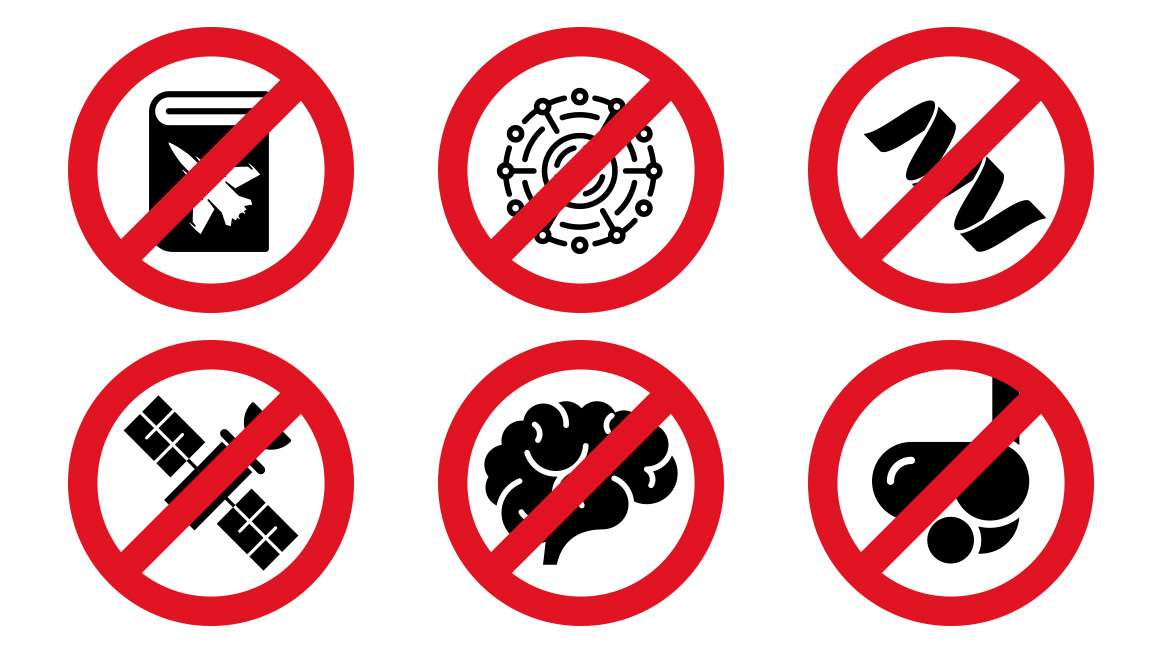Oleg Tishchenko logged onto the Digital Combat Simulator fan forum in 2011 and posted an innocuous request: “Help needed with eBay item shipping.” Tishchenko was the lead avionics programmer for Eagle Dynamics, which produces the simulation game, and he had found an old F-16 fighter jet flight manual for sale. But the seller wasn’t shipping outside of the United States, so Tishchenko needed someone to pick up the book and mail it to Russia.
It made sense. Tishchenko’s job at Eagle Dynamics was “to make a picture that looks like what you’d see in real life,” he told the Russian opposition magazine Meduza. “If a certain device displays velocity in real life, it should display velocity in our games too.” He had ordered dozens of flight manuals before without any problem, but a few forum users warned Tishchenko the book might be covered by U.S. weapons laws.
“I thought they were being overly cautious, that it was some kind of super law-abiding American thing,” he later told Meduza. “I knew it wasn’t just eBay where these things were being sold. There are websites selling the same exact manuals that just keep on going without a problem.”
The post, however, had caught some unwanted attention. Tishchenko’s eBay account was banned. An undercover agent approached him online, asking Tishchenko to meet outside Russia to buy more fighter jet manuals. When Tishchenko applied for a visa to visit Germany, an official at the German consulate told him he couldn’t enter Europe due to a weapons-smuggling investigation.
In summer 2018, when Tishchenko was at a concert in the Republic of Georgia, a group of Georgian police burst in and pulled him away from the woman he was dancing with. He was arrested and handed to a pair of U.S. Marshals at the airport in Tbilisi. Tishchenko pleaded guilty to Arms Export Control Act violations and was sentenced to time served. The U.S. government, which had gone through all the trouble of taking Tishchenko in, flew him back to Russia a few months later.
Sharing weapon manuals illegally has become something of a running joke among video game fans ever since. Players of War Thunder, a Hungarian competitor to Digital Combat Simulator, have taken to posting military documents on the fan forum every few months. No doubt wary of facing the same fate as Tishchenko, War Thunder founder Anton Yudintsev went to The Washington Post in 2022 to beg fans to knock it off.
For the most part, user manuals shouldn’t be seen as legally sensitive. They’re not blueprints for manufacturing weapons; they are merely guides for using them, meant for ordinary troops to read. Neither the book that Tishchenko bought nor most of the PDFs being posted to the War Thunder forum are classified; any American can own one of these manuals, legally.
Despite all that, weapons manuals are considered “munitions” under the International Traffic in Arms Regulations (ITAR) set by the U.S. State Department. Thus, “exporting” one or even showing it to a foreigner is legally equivalent to exporting a bomb. And the federal government’s overly capacious vision of information as ammunition goes far beyond fighter jet manuals.
Weaponized Algorithms
Until the late 1990s, encryption algorithms were also on the U.S. Munitions List, making it illegal for foreigners to download certain American-made web browsers.
Beyond ITAR, the U.S. Commerce Department’s Export Administration Regulations (EAR) strictly control “dual-use” technologies that could be used in war or weapons manufacturing. Space satellites, carbon fiber materials, underwater rebreathers, high-end night-vision goggles, lasers, supercomputers, and even certain types of medical equipment are all covered by these regulations. In some cases, people who clearly had no intent of doing anything of a military nature with certain objects have been treated by the U.S. government as potential weapons smugglers.
Earlier this year, the U.S. government announced it would tighten its enforcement of these rules even further. “There are going to have to be some penalties that get everyone’s attention,” Matthew Axelrod, assistant secretary for export control at the Department of Commerce, told a group of law students in January 2024, according to Reuters. “I think we’re on the cusp of that.” He cited a $300 million fine against California electronics company Seagate Technology for selling hard drives to Chinese telecom giant Huawei.
Arms export laws might seem in theory a sensible use of government power. The weapons industry is not really a free market, since all the customers are other governments or governmentlike forces. And private companies in the U.S. probably shouldn’t be arming potential foreign aggressors, let alone wartime enemies.
The U.S. arms control system, however, has grown into something quite different from a ban on gunrunning. Since the Cold War, these export control laws have been used as a tool for slowing down the development of peacetime competitors. For example, the Department of Commerce has been tightening the rules on exporting semiconductors to China for any purpose, claiming that artificial intelligence could be used by the Chinese military.
These restrictions have done a lot of collateral damage, bringing down the full force of the national security state on everyone from scuba suppliers to cancer researchers. They’ve blocked scientists from sharing lifesaving data with foreign colleagues.
For most of U.S. history, the government was concerned with taxing and regulating imports coming into the country, not exports leaving U.S. soil. But the age of industrial warfare brought new concerns that exports could be dangerous, either by empowering enemies or by dragging the United States into conflicts the country wanted no part in. Congress passed the Trading with the Enemy Act in 1917 (which gave the president new powers to impose economic sanctions) and the Neutrality Acts in the 1930s (a series of laws banning weapons exports to countries engaged in a war, even conflicts the U.S. was not a party to).
The export control system was overhauled several times after World War II. The United States founded the Coordinating Committee for Multilateral Export Controls, or CoCom, a coalition of capitalist nations that agreed to keep strategic technologies out of Communist hands. CoCom was abolished after the Soviet Union collapsed, but our own domestic export controls—ITAR and EAR—stayed.
Cryptography was the first time the public policy problems with these export controls made big news.
Before personal computers and electronic banking, encrypted communications were primarily used in military settings. However, in 1976, Ron Rivest, after a wine-induced moment of brilliance at a Passover ceremony, created the Rivest–Shamir–Adleman (RSA) algorithm. This groundbreaking algorithm allowed two individuals to share encrypted messages without needing to exchange a secret key beforehand, a feat previously believed to be impossible by mathematicians.
This innovation marked a significant shift as it enabled strangers to encrypt their communications without the need for specialized equipment or codebooks. Phil Zimmermann later used the RSA algorithm to develop Pretty Good Privacy, the first encrypted email software for consumers, allowing individuals to protect their communications from prying eyes.
Despite the positive impact of encryption technology on privacy, the U.S. government initially viewed it with suspicion. Zimmermann faced a grand jury investigation for allegedly violating export laws by distributing his software online. However, due to public outcry and support from civil libertarians, the case was eventually dropped.
The use of the RSA algorithm extended beyond personal communications, as companies like Netscape utilized it to create Secure Sockets Layer for encrypting online transactions. Export control laws around encryption technology became a topic of discussion and even humor among computer scientists.
Ultimately, the U.S. government revised its stance on cryptographic software, moving it from the Munitions List to a dual-use list in 1996. However, tech companies still need to notify the Department of Commerce before releasing new encryption software.
The story of Masoud Soleimani, a medical researcher, and his colleagues highlights how international collaborations in scientific research can lead to unintended legal consequences. Despite the initial suspicion surrounding their actions, it became clear that the materials they were working with were intended for legitimate scientific purposes, not weapons of mass destruction.
The case of Soleimani and his colleagues became entangled in geopolitical negotiations, serving as bargaining chips in a hostage exchange between the U.S. and Iran. Ultimately, the charges against them were dropped, highlighting the complex intersection of science, law, and politics in international collaborations.
These cases underscore the challenges faced by civilian scientists in navigating the legal and political landscape surrounding scientific research, encryption technology, and international collaborations. The evolving nature of these issues continues to shape how researchers engage in global scientific endeavors. The government has repeatedly emphasized that exporters do not need to prove a nefarious use for goods, despite vague insinuations of national security threats. In 2016, a businessman requested rebreathers for a shipwreck dive, leading to a legal battle due to export restrictions. The Department of Commerce later indicted individuals for violating regulations, focusing solely on disobeying orders rather than proving any malicious intent.
Furthermore, U.S. export regulations extend beyond Earth, impacting space industry collaborations with foreigners. A series of accidents involving Chinese rockets led to restrictions that hindered American companies. The U.S. government treated safety information provided to China as illegal export of weapons technology, imposing fines and moving commercial satellites back onto the Munitions List. This overreaction severely damaged the U.S. satellite market’s global share.
Additionally, staffing challenges arise in the space industry due to ITAR restrictions on hiring foreign individuals. Employers must obtain State Department licenses for non-U.S. citizens to work on controlled technology, documenting all interactions to comply with regulations. Remember, disclosing information about a “weapon” to a foreign national is considered equivalent to exporting the weapon itself by the government.
In conjunction with civil rights legislation, export controls pose a complex challenge for employers. For example, in 2005, General Motors was fined $20 million for sharing ITAR-controlled data with foreign employees, leading the company to implement stringent ITAR compliance measures. However, these measures became overly restrictive, requiring green card holders to submit their foreign passports, resulting in the government penalizing General Motors an additional $365,000 for discrimination in 2023.
When SpaceX declared its decision to exclusively hire U.S. citizens or green card holders to streamline ITAR compliance, the Justice Department filed a lawsuit against SpaceX for alleged discrimination based on immigration status. The legal proceedings are currently stalled due to procedural complications.
According to attorney Lisa Mays, companies are prohibited from discriminating in hiring and staffing practices based on citizenship or national origin. Even if a company needs an export license to employ a non-U.S. individual, they must select the most qualified candidate and then apply for the necessary export license.
Mays inadvertently highlighted the inherent contradiction within the system. While America aims to be a meritocratic hub of innovation where talent and expertise are welcomed, it also seeks to tightly regulate the outflow of knowledge.
This necessitates the establishment and enforcement of a seemingly absurd perspective, where books are likened to fighter jets, code represents bullets, cancer researchers are viewed as potential bioterrorists, and an accident report is seen as a blueprint for global destruction.
Source link





